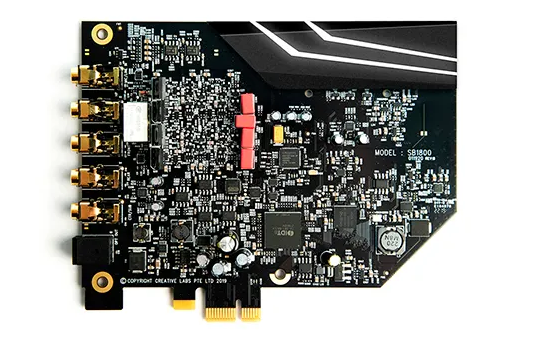- Dave – veteran sound engineer, born with a soldering iron in hand, worships the Sound Blaster 16. Thinks “IRQ conflicts” build character.
- Lia – modern audio wizard, runs 384kHz/32-bit floating point sessions for breakfast, lives in a DAW (probably Ableton), and laughs in ASIO.
Scene: Two engineers meet at an audio conference coffee break.
Dave:
Ah, the good old days… I still remember the joy of manually setting jumpers on my Sound Blaster 16. IRQ 5, DMA 1… Heaven.
Lia:
Wait, did you just say “manual IRQ”? That’s not heaven, that’s audio engineering Dark Souls! How did anything ever work?
Dave:
It didn’t. That was the fun part! We’d install a driver, reboot five times, pray to the DOS gods, and still get General MIDI instead of WAVETABLE SYNTH! Those were real drivers – handwritten in assembly, with the blood of ten developers.
Lia:
You mean those 500KB drivers that somehow managed to crash Windows 95 just by existing? We’ve come a long way. These days, I plug in my audio interface via USB-C, and I’m tracking 24-bit/96kHz within 30 seconds. With latency so low, it practically predicts what I’ll play.
Dave:
Bah! Latency! Back then, we didn’t lower latency — we respected it. It taught patience. Character. Discipline.
Lia:
Now it just gets in the way of tight drum tracking. I need sub-3ms latency or I start hearing the existential delay of my own decisions.
🧠 Deep Dive: The Evolution of Sound Drivers
Dave:
In my day, sound cards were beasts. Sound Blaster, Gravis UltraSound, Turtle Beach… They had their own synth chips and onboard effects. Then came DirectSound, WDM, and finally, ASIO changed everything.
Lia:
Yup, ASIO (Audio Stream Input/Output) was the game-changer. Steinberg introduced it to bypass Windows’ terrible audio stack — Windows Mixer was a nightmare. Now we have ASIO, CoreAudio on macOS, and even WASAPI for high-performance on Windows.
Dave:
Don’t forget JACK on Linux, for those who love pain.
Lia:
Linux audio is like building a space station out of LEGO – it works, eventually, but you will cry.
🎧 Sound Quality: Analog vs Digital — Fight!
Dave:
Analog had soul. A little hiss, a little warmth. Digital? It’s just 1s and 0s, no character.
Lia:
Come on, Dave. That “soul” was just THD and noise floor talking. I love analog warmth too, but let’s not romanticize 60Hz hum. We can model that now.
Dave:
Modeling! Pfft. You think a plugin can replace a Neve preamp?
Lia:
Yes. And I can run 20 instances of it. On my laptop. While streaming cat videos. Analog is amazing — but digital gives you recall, flexibility, and cleaner-than-reality signal paths.
Dave:
Fine, fine. But let’s admit – digital converters have come a long way. Remember the 90s DACs? Harsh. Thin. Like someone microwaved a trombone.
Lia:
Today’s DACs are ridiculous. 120dB+ dynamic range, near-zero jitter, 192kHz support. Interfaces from RME, Universal Audio, MOTU, and Focusrite are doing pro-level audio with USB power alone.
🧪 Myths Busted
Dave:
My cousin still thinks MP3s sound “just as good” as FLAC.
Lia:
Only if your speakers are made of cardboard and shame. Let’s kill some myths:
- Myth 1: “Higher sample rate always means better sound.”
Nope. Above 96kHz, it’s mostly about headroom for processing, not audible improvement. - Myth 2: “You can hear the difference between 24-bit and 32-bit float.”
Not unless your ears were trained by a bat in a mastering studio. - Myth 3: “Analog always sounds better.”
It’s different, not always better. Analog has saturation and non-linearity; digital is transparent and precise. - Myth 4: “USB audio interfaces are worse than PCIe.”
Not anymore. Latency is comparable, and USB has the benefit of plug-and-play portability.
⚙️ Today’s Audio Engineering Landscape
Dave:
So what do you run in your studio?
Lia:
RME interface, 32-bit float sessions, running Cubase with dozens of VST3s. No noise. No hiss. No weird driver crashes. My iPad has better latency than your 90s DAW.
Dave:
Alright, alright. I admit it. Things have improved. But I still miss the Sound Blaster boot jingle. That was the sound of an era.
Lia:
Fair. But I’ll trade nostalgia for 0.7ms round-trip latency and Thunderbolt clock sync any day.
🧩 Conclusion: A Harmonious Blend
Dave:
So maybe it’s not analog vs. digital. It’s analog and digital — using the best of both.
Lia:
Exactly. Hybrid workflows rule. Warm analog front-ends, clean digital chains, and DAWs that let us sculpt sound like never before.
Dave:
Fine. But if you ever hear a plug-in say “DMA Conflict Detected,” you call me, okay?
Lia:
Only if I can borrow your floppy disks.

Leave a Reply